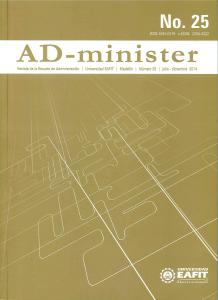The new international financial architecture: Lessons and experiences from Africa
Main Article Content
Keywords
Corporate governance, International Financial Reporting Standards (IFRS), New International Financial Architecture (NIFA), transparency
Abstract
The purpose of this paper is to examine the requirements and successes of the New International Financial Architecture (NIFA) on transparency and corporate governance from a global perspective with a special focus on Africa. In recent years, transparency, accountability and governance have become key topics with many countries around the world having adopted International Financial Reporting Standards (IFRS) and corporate governance codes. The outcomes of these initiatives have been unconvincing. Desktop research was used to gather literature and data on compliance with corporate governance codes and International Financial Reporting Standards (IFRS) and other NIFA requirements. This study established that in spite of many regional and global initiatives by the World Bank and relevant regulators, compliance with IFRS and governance in parts of Africa has yet to reach its best level and guidelines are not fully followed leading to opportunities for improvement and policy adjustments. This research has implications and uses for both global and local institutions and regulators concerned with economic stability and growth including the World Bank, central banks, capital markets and boards of companies and the government in general. The findings contribute to governance debates by providing additional perspectives from Africa on compliance with accounting standards and codes in a region where research and corporate governance and reporting issues are still confusing.
Downloads
References
Ashbaugh-Skaife, H., Collins, D. W. & LaFond, R. (2006). The effects of corporate governance on firms’ credit ratings. Journal of Accounting and Economics, 42(1–2), 203–243. doi: http://dx.doi.org/10.1016/j.jacceco.2006.02.003
ASX Corporate Governance Council., & Australian Stock Exchange. (2003). Principles of good corporate governance and best practice recommendations. Sydney: Australian Stock Exchange Ltd.
Bank for International Settlements. (1998). Report on the international Financial Architecture on work groups. Bank for International Settlements. Retrieved from: http://www.bis.org/publ/othp01.htm
Barth, M. E., Landsman, W. R., & Lang, M. H. (2008). International Accounting Standards and Accounting Quality. Journal of Accounting Research, 46(3), 467–498. doi:10.1111/j.1475-679X.2008.00287.x
Brown, L. & Caylor, M. (2004). Corporate Governance and Firm Performance. Georgia: Available at SSRN. doi: http://dx.doi.org/10.2139/ssrn.586423
Bruner, C. (2011). Corporate Governance Reform in a Time of Crisis. Journal of Corporation Law, 36(2), 309–341.
Centre for Corporate Governance (CCG). (2006). Training Course for Directors. Handbook. Nairobi, Kenya.
Christensen, H, Lee, E. & Walker, M. (2008). Incentives or Standards: What Determines Accounting Quality Changes Around IFRS Adoption? In AAA 2008 Financial Accounting and Reporting Section (FARS) Paper. Minneapolis: SSNR. doi:http://dx.doi.org/10.2139/ssrn.1013054
Coffee, J. (2005). A Theory of Corporate Scandals: Why the U.S. and Europe Differ’. Columbia Law and Economics Working Paper No. 274 Available at SSRN. doi: http://dx.doi.org/10.2139/ssrn.694581
Economic Commission for Africa. (2002).Guidelines for Enhancing Good Economic and
Corporate Governance in Africa. New York: Economic Commission for Africa.
http://repository.uneca.org/bitstream/handle/10855/5544/Bib-39457.pdf?sequence=1
Fama, E. F. (1980). Agency Problems and the Theory of the Firm. Journal of Political Economy, 88(2), 288–307. Retrieved from: http://www.jstor.org/stable/1837292
IAS Plus. (2010). Background to International Financial Reporting Standards. Retrieved from: http://www.iasplus.com/en/resources/ifrsf/due-process/background-to-ifrs
Iliev, P. (2010). The Effect of SOX Section 404: Costs, Earnings Quality, and Stock Prices. The Journal of Finance, 65(3), 1163–1196. doi:10.1111/j.1540-6261.2010.01564.x
Leblanc, R. & Gillies, J. (2003). The Coming Revolution in Corporate Governance. Ivey Business Journal 68, 1-11. Retrieved from: http://iveybusinessjournal.com/topics/governance/the-coming-revolution-in-corporate-governance#.VGOLFjSG9qk
Leke, A, Lund, S, Roxburgh, Ch., & van Wamelen, A. (2010). What’s driving Africa’s growth? Insights & Publications (McKinsey & Company). Retrieved from:
http://www.mckinsey.com/insights/economic_studies/whats_driving_africas_growth
Lipton, P. (2003). ‘The Demise of HIH: Corporate Governance lessons’. Keeping Good
Companies, 55(5), 273-277.
Mckinseys & Company (2002). Global investor Opinion Survey: Key findings. Retrieved from: http://www.eiod.org/uploads/Publications/Pdf/II-Rp-4-1.pdf
Montgomery, S. (2007). ‘Corporate Governance in Developing Countries:
Shortcomings, Challenges & Impact on Credit’. Congress to celebrate the fortieth annual session of UNCITRAL, Vienna 9-12 July 2007. Retrieved from:
http://www.uncitral.org/pdf/english/congress/Cooper_S_rev.pdf
OECD. (2009). Principles of Corporate Governance. Paris: OECD. Retrieved from: http://www.oecd.org/corporate/ca/corporategovernanceprinciples/31557724.pdf
Okeahalam, C. & Akinboade, O. (2003). A Review of Corporate Governance in
Africa: Literature, Issues and Challenges Paper. Global
Corporate Governance Forum, 15 June 2003. Retrieved from: http://www.researchgate.net/publication/237256378_A_Review_of_Corporate_Governance_in_Africa_Literature_Issues_and_Challenges
Ramalho, A. (2013). African Corporate Growth Depends on Corporate
Governance. Institute of Directors in Southern Africa (IoDSA). Retrieved from: http://www.iodsa.co.za/news/129222/African-Corporate-Growth-Depends-on-Corporate-Governance.htm
Reilly, D. (2006). ‘Sarbanes-Oxley Changes Take Root’. The wall street Journal, March
3. Retrieved from: http://online.wsj.com/articles/SB114135577334088374
Robinson, T. & Munter, P. (2004). Financial Reporting Quality: Red Flags and
Accounting Warning Signs. Commercial Lending Review. , 1-15Retrieved from: http://www.tsi-thailand.org/images/stories/TSI2012_Professional/Download/CISA2_FinancialReportingQuality.pdf
ROSC Uganda (2008). Report on the observance of Standards and Codes (ROSC) on
Uganda Accounting and Auditing Standards. Retrieved from:
http://www.worldbank.org/ifa/rosc_aa_uga.pdf
Shleifer, A., & Vishny, R. W. (1997). A Survey of Corporate Governance. The Journal of Finance, 52(2), 737–783. doi:10.1111/j.1540-6261.1997.tb04820.x
Singh, R. & Newberry, S. (2008). Corporate Governance and International Financial
Reporting standard (IFRS): The Case of Developing Countries. Research in
Accounting in Emerging Economies, 8, 483–518.
Soederberg, S. (2002). The contradictions of the New International Financial
Architecture: another procrustean bed for emerging markets? Third World Quarterly, 23(4), 607–620. Retrieved from: http://www.jstor.org/stable/3993478
Stanwick, P. (2008). Corporate Governance in the 21st Century: Do We Need Global
Standards? Queens University Belfast conference 7-9 September 2008. Retrieved from: http://wwwcrrconference.org
Tan, W. & Tan, M. (2004). The Impact of Corporate Governance on Value Creation in
Entrepreneurial Firms. Singapore: Singapore Management University Library.
Rencontres de St-gall 2004 (2004).
Available at: http://works.bepress.com/weeliang_tan/7
The Accountant (2006). Applied Corporate Governance: Lessons from Corporate
Failures. Nairobi: Journal of the institute of Certified Public Accountants of Kenya, 13-14.
World Bank (2005). ‘T O O L K I T 2 Developing Corporate Governance Codes of Best
Practice users guide’. Washington, USA: The World Bank and IFC. Retrieved from: http://www.gcgf.org/wps/wcm/connect
World Bank (2010). Report on the observance of Standards and Codes (ROSC) on
Kenya Accounting and Auditing Standards. World Bank Group. Retrieved from:
http://www.worldbank.org/ifa/rosc_aa.html

